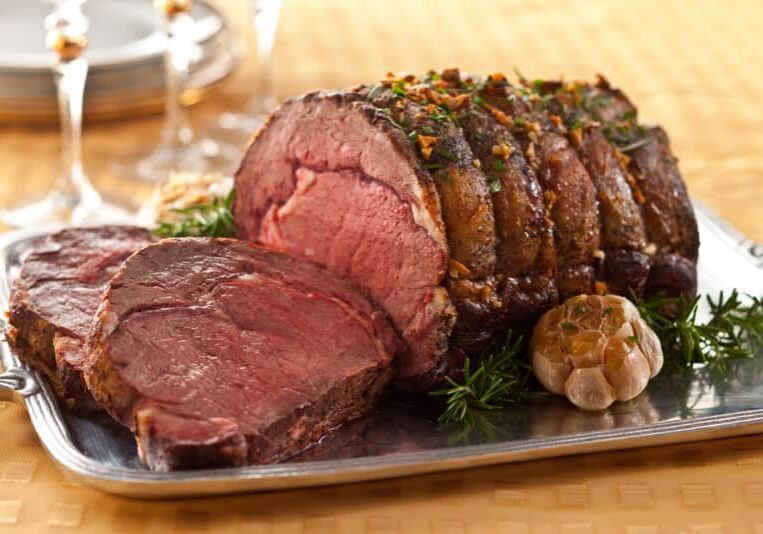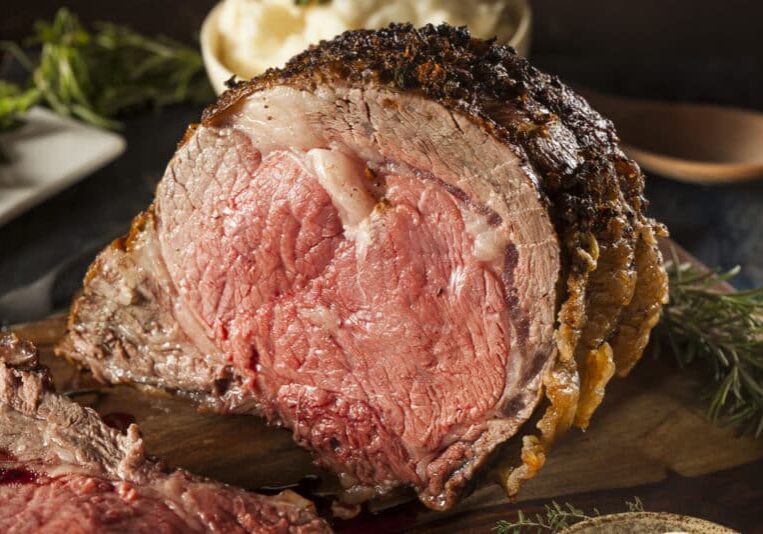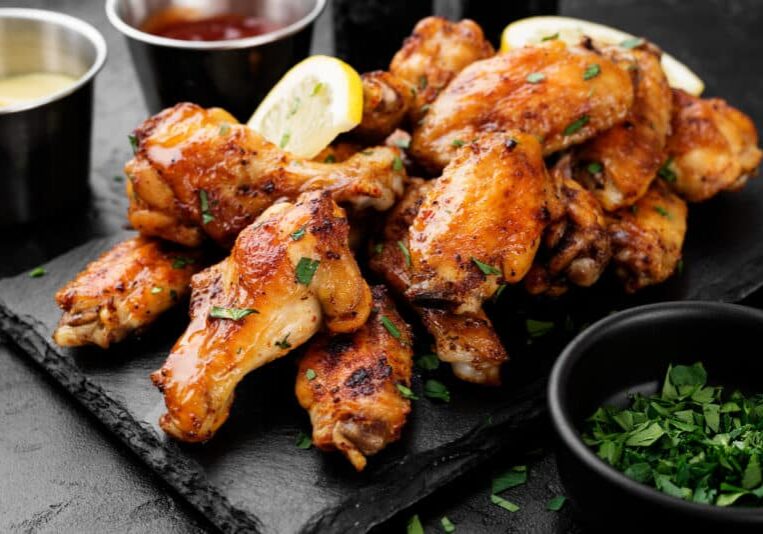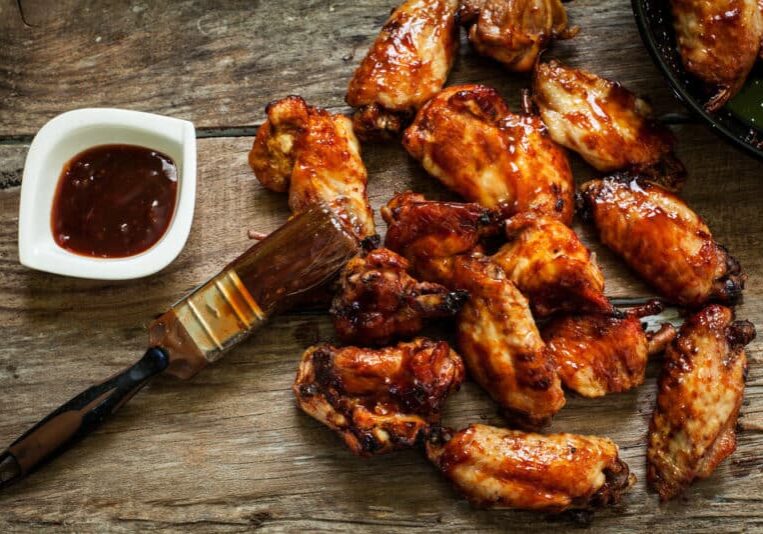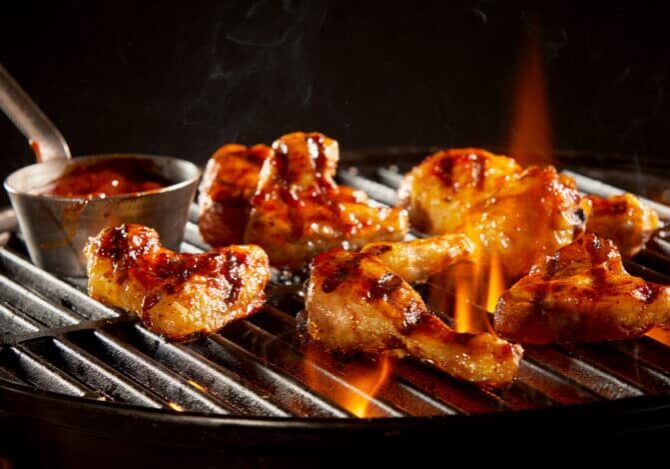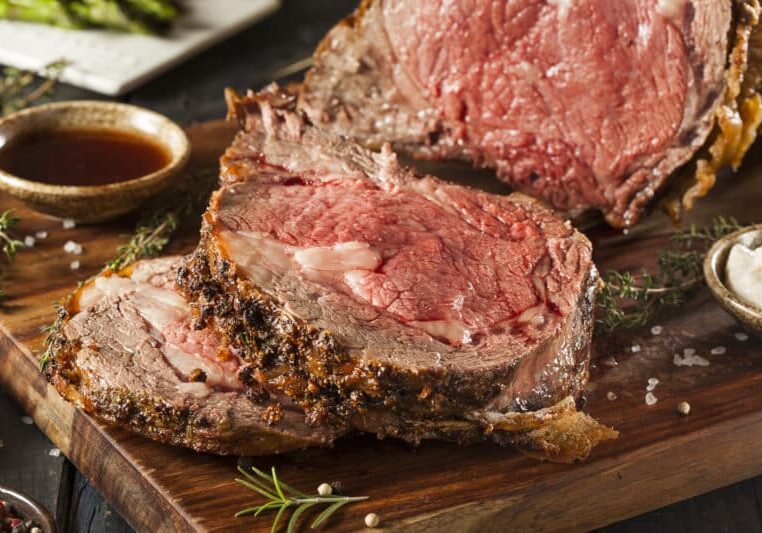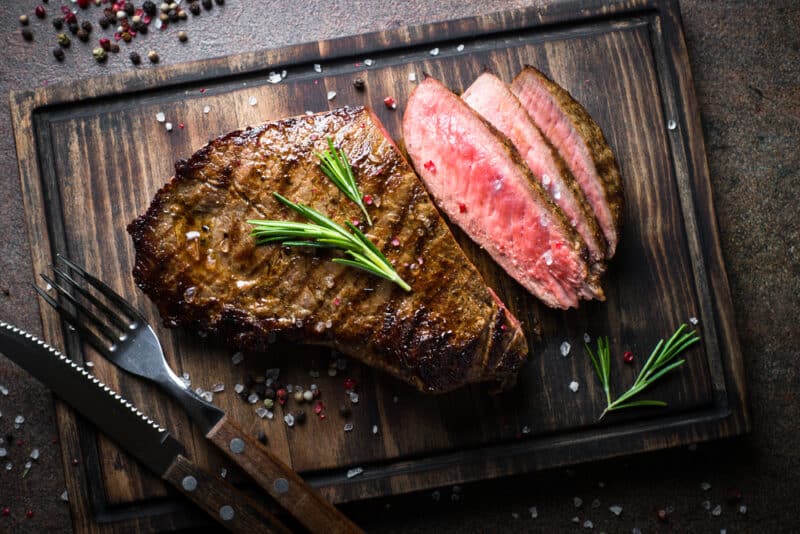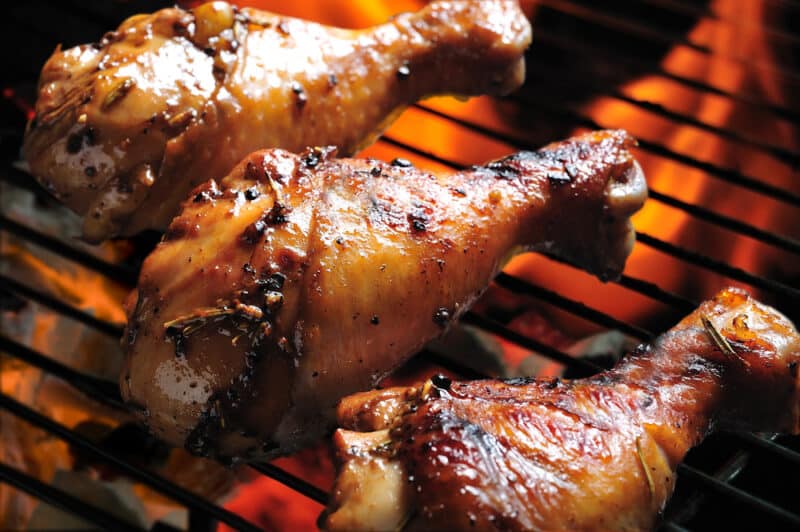Types of Ribs (Your Ultimate Guide)
TheGrillingMaster.com is reader-supported. If you buy something using the links on our site, we might earn an affiliate commission at no added cost to you. This helps us pay our staff to keep making awesome content for you!
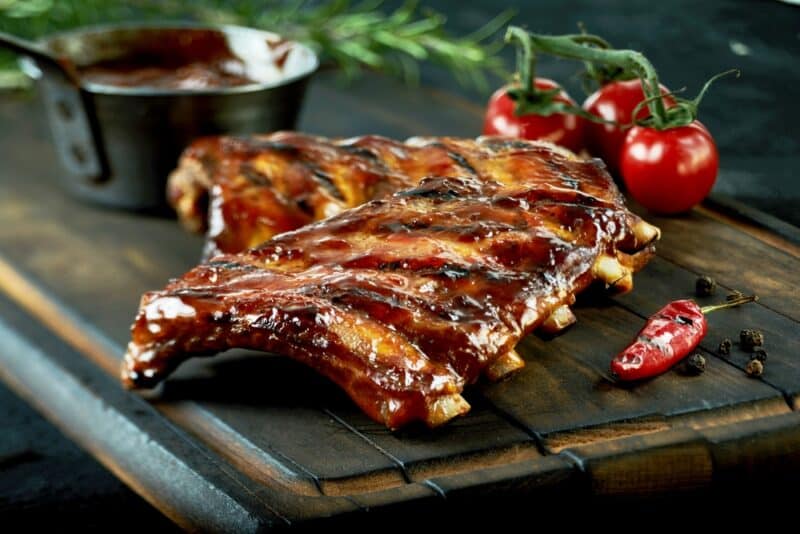
Beef ribs primarily come in three variants: short ribs, flank-style ribs, and baby back beef ribs. On the other hand, pork ribs are predominantly classified into four types: spareribs, St. Louis-style ribs, country-style ribs, and baby back ribs.
Types of Ribs
-
Pork Spare Ribs: These ribs bear some similarities to baby back ribs, albeit with a slightly richer flavor profile.
-
Baby Back Ribs: These ribs originate from the upper section of the pig’s rib cage, specifically at the juncture of the ribs and the spine.
-
St. Louis Ribs: These are meticulously trimmed spare ribs, sourced from the hog’s belly once the belly portion has been excised.
-
Short Ribs: While these are smaller and possess a chewier consistency compared to beef back ribs, their taste and texture are reminiscent of chuck or brisket.
-
Country-Style Ribs: Regarded as the most meat-laden variety, these ribs are found in the vicinity of the baby back ribs, close to the shoulder blade.
-
Beef Back Ribs: Sometimes humorously referred to as “dinosaur ribs” due to their grand size and distinctive appearance.
-
Lamb Riblets: These are cut from the breast section and are characterized by elongated, narrow rib bones interspersed with layers of meat and fat.
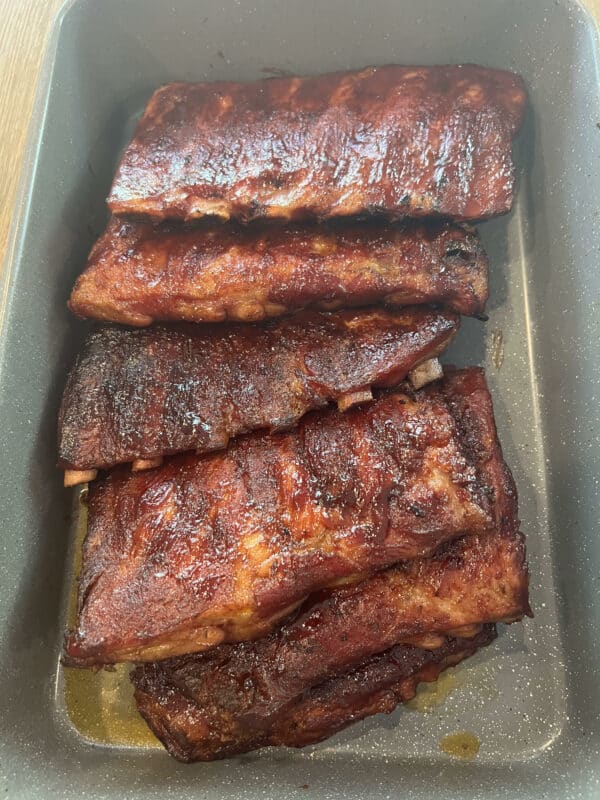
(Above are St. Louis ribs I smoked for 8 hours on Labor Day. Man they really turned out great. The meat fell right off the bone!)
Understanding the Anatomy of a Rib
As a BBQ enthusiast and grilling master, I find that a good understanding of the rib anatomy can go a long way in elevating your BBQ game. When you get a grasp on the different parts of a rib cut, you’ll be better equipped to select the right ribs for your grill, judge their quality, and master their cooking.
A rib refers to a series of long, curved bones encompassing the chest of an animal. These bones are interconnected by intercostal muscles. When we talk about ribs in the context of BBQ, we’re often referring to the meat that’s attached to these bones, which includes the muscles and sometimes, a layer of fat and connective tissue.
Different parts of the rib cut have different characteristics, and hence, impart different flavors and textures. Closest to the backbone, you’ll find the so-called ‘baby back ribs.’ These are smaller, leaner, and more tender, making them perfect for quick grilling. Further down the rib cage, we encounter ‘spare ribs’ – these are larger, fattier, and packed with flavor, but they require a longer, slower cooking method to tenderize.
Moving on to beef ribs, you have ‘back ribs,’ which are large, meaty, and flavorful, often referred to as ‘dinosaur ribs’ due to their size. ‘Short ribs’ are cut from the lower portion of the animal and are richly marbled with fat, which melts during cooking to provide juicy, tender meat.
Understanding the anatomy of a rib is not just for the sake of knowledge. It’s about elevating your BBQ skills, enhancing your culinary creativity, and most importantly, satisfying those taste buds to the fullest. It’s fascinating, isn’t it? Once you get the hang of it, you’ll realize that BBQing is not just cooking; it’s an art of its own.
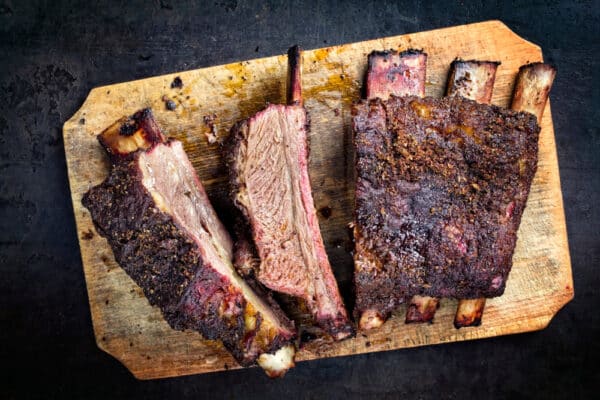
Factors That Influence the Choice of Ribs
I’ve come to understand that selecting the right type of ribs can make all the difference in your BBQ experience. There are several factors you need to consider to ensure your choice meets both your cooking and taste expectations.
There’s the meatiness of the rib cut. For a hearty, satisfying BBQ, you might want to go for something like country-style ribs, known for their generous meat content. However, if you’re a fan of delicate, tender meat that’s easy to nibble off the bone, baby back ribs might be your best bet.
Flavor is another significant factor. Different cuts of ribs have unique flavor profiles, influenced by the specific part of the animal they come from, and the proportion of muscle, bone, and fat. Spare ribs, for instance, tend to have a richer, more robust flavor due to their larger amount of fat, making them an excellent choice for those who appreciate a hearty, umami-packed BBQ.
Speaking of fat, the fat content in a rib cut not only affects its flavor but also its cooking characteristics. Cuts with a higher fat content, like short ribs, often require longer, slower cooking methods to render the fat and tenderize the meat. On the other hand, leaner cuts like baby back ribs can be cooked faster and at higher temperatures.
Also you should know that the cooking time can be a deciding factor. If you’re looking for a quick BBQ, opt for smaller, leaner cuts like baby back ribs that cook fast. But if you’ve got all day to tend to your grill, then larger, fattier cuts like spare ribs or beef back ribs would be perfect, rewarding your patience with incredible depth of flavor.
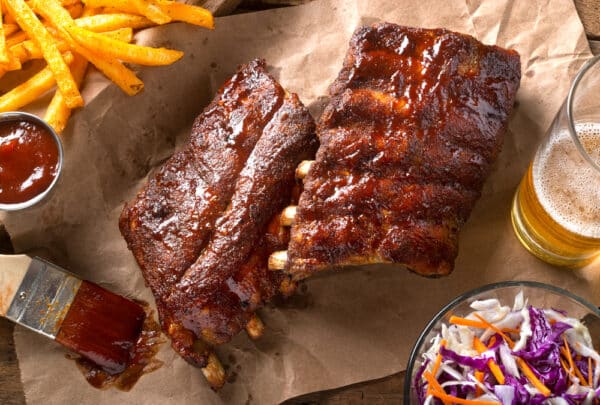
Popular Rib Recipes Around the World
I’ve had the privilege to savor and experiment with a variety of rib recipes from different corners of the world throughout my grilling journey. Each culture brings its unique spin to the table, enriching the global BBQ landscape. Allow me to take you on a quick world tour of some of the most remarkable rib recipes I’ve come across:
-
American BBQ Ribs: This is my all-time favorite and an absolute classic in the world of BBQ. Depending on the region in the U.S., you’ll find variations in the rubs, sauces, and smoking techniques used. In Kansas City, they love their ribs smoky, with a sweet, tangy sauce. Meanwhile, Memphis-style ribs are either served “dry,” with just a spice rub, or “wet,” basted with sauce during cooking. Each style offers a distinct and memorable flavor profile, making American BBQ ribs a must-try for any rib enthusiast.
-
Korean Galbi (Short Ribs): This is an exotic and delicious recipe that I fell in love with on a trip to South Korea. Galbi refers to marinated, grilled short ribs. The ribs are often butterflied into thin, long pieces and marinated in a mix of soy sauce, pear juice, garlic, and sesame oil. This marinade imparts an enticing sweet and savory flavor to the ribs. Once grilled, the ribs acquire a beautiful char that further enhances their taste.
-
Chinese Char Siu Ribs: Char Siu is a popular method of cooking in Chinese cuisine, characterized by its glossy, sweet, and savory glaze. Typically, the ribs are marinated in a mix of hoisin sauce, soy sauce, honey, Chinese five-spice powder, and other ingredients. The result is a perfectly caramelized, flavorful rib that is simply irresistible.
-
Jamaican Jerk Ribs: Jamaica brings a fiery twist to ribs with its jerk seasoning. A blend of scotch bonnet peppers, allspice, thyme, garlic, and other spices, jerk seasoning gives the ribs a hot, spicy, and slightly sweet flavor. Smoking the ribs over pimento wood adds another layer of complexity, making these ribs a hit among spice lovers.
-
South African Braai Ribs: A braai is a South African BBQ, and their ribs are something special. They’re typically marinated in a sweet and tangy sauce that includes apricot jam, vinegar, onions, and other ingredients, before being slow-cooked over wood or charcoal. The ribs come out sticky, smoky, and incredibly tasty.
These are just a few examples of the vibrant and diverse world of BBQ ribs. Each culture has its unique way of transforming a simple rib cut into a masterpiece of flavors. And as I always say, the best part of BBQ is its universal language: it doesn’t matter where you’re from or what your background is, the love for well-cooked ribs brings us all together.
Best Grilling Techniques for Different Types of Ribs
Ah, the grilling techniques! It’s the cornerstone of every BBQ journey, and mastering these techniques has been both a passion and a quest for me. There’s a sense of art and science that comes into play when it’s time to get those ribs on the grill, and today, I’ll share with you some of the most effective strategies I’ve learned over the years.
The cardinal rule for grilling ribs, especially larger cuts like spare ribs or beef back ribs, is the “low and slow” method. This involves cooking the ribs at a low temperature over a long period of time. The magic of this technique lies in its ability to break down the collagen in the meat, rendering it tender and juicy. There’s no rush here; patience is key. My usual routine is to maintain a temperature of around 225-250°F, letting the ribs cook for anywhere between 4 to 6 hours, depending on the cut.
-
Low and Slow Cooking: For larger cuts like spare ribs or beef back ribs, use the “low and slow” method. Maintain a temperature of around 225-250°F and let the ribs cook for between 4 to 6 hours. This breaks down the collagen in the meat, making it tender and juicy.
-
Higher Heat for Shorter Ribs: For shorter, thinner ribs, like baby back ribs, start with high heat to sear the ribs on each side, then lower the heat to let them cook through for another hour or so. This method gives the ribs a perfect char and tender inside.
-
Marinating and Seasoning: Marinate your ribs overnight to let them absorb all the flavors from your marinade. For rubs, use a simple combination of salt, pepper, and a few choice spices to complement the natural flavors of the ribs.
-
Smoking vs. Grilling: Both methods have their unique benefits. Smoking imparts a smoky flavor to the ribs and is perfect for slow, leisurely cooking. Grilling gives a wonderful char and is often quicker. Choose based on the rib cut, occasion, and personal preference. You should use a charcoal smoker for the best flavor.
When it comes to smoking vs. grilling, both techniques have their unique charm. Smoking imparts a smoky flavor to the ribs and is perfect for a slow, leisurely cookout. Grilling, on the other hand, gives a wonderful char and is often faster. I love both techniques and often choose based on the rib cut, the occasion, and frankly, my mood.
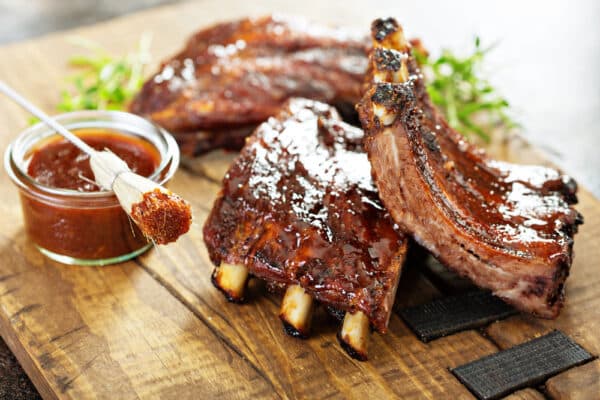
Rubs and Sauces for Different Types of Ribs
Pairing the right sauce or rub with your ribs can truly bring out the best in your BBQ, turning a good meal into a memorable one. As a BBQ enthusiast, I have a treasure trove of go-to sauces and rubs that I’ve gathered over the years, and I would love to share some of them with you.
BBQ Sauces
-
Kansas City-Style BBQ Sauce: This is a thick, rich, and sweet sauce with a tangy kick, thanks to the mix of ketchup, brown sugar, and vinegar. It’s a wonderful complement to smoked ribs and can be brushed on near the end of cooking or served on the side.
-
Eastern North Carolina BBQ Sauce: A thin, vinegar-based sauce that’s more tangy than sweet. It’s great for those who prefer a sharper flavor to balance the richness of the ribs. It’s often used as a mop sauce, basted onto the ribs during the last part of cooking.
-
South Carolina-Style Mustard Sauce: This one’s a delightful blend of mustard, vinegar, sugar, and spices. It’s tangy, sweet, and a bit spicy, making it a great match for pork ribs.
Checkout my guide on the best 2-burner gas grill here.
BBQ Rubs
-
Memphis-Style Rub: Typically made from a blend of paprika, brown sugar, black pepper, cayenne, and various spices, this rub offers a sweet and spicy flavor profile that works wonders on ribs.
-
Texas-Style Rub: This rub is simpler and lets the meat shine. It’s usually a mix of just salt and black pepper, sometimes with a bit of cayenne or chili powder added for heat.
-
Kansas City-Style Rub: Similar to the Memphis style, but with more sugar and less spice. It creates a beautiful, sweet crust on the ribs when cooked.
The beauty of BBQ lies in its versatility. Different sauces and rubs can bring out different aspects of the ribs’ flavor, making each BBQ a unique experience. It’s a wonderful playground for culinary exploration, and I encourage you to experiment and find the combinations that you love the most. You might prefer a sweet and smoky Kansas City-style sauce on your spare ribs or a tangy Carolina-style sauce on your baby backs. Or maybe you’ll fall in love with a spicy rub that you created yourself.
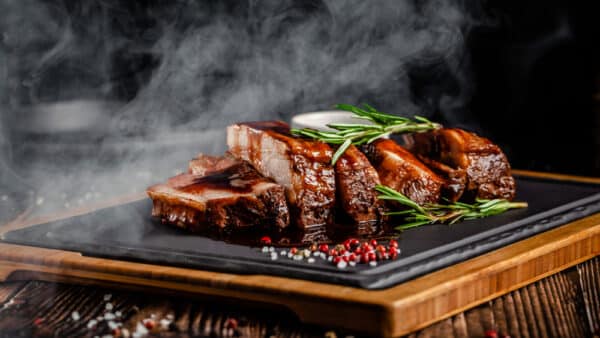
Best Side Dishes to Pair with Ribs
-
Coleslaw: This creamy, tangy side dish is a BBQ classic. The crunch and freshness of the cabbage and carrots balance the richness of the ribs and makes coleslaw a prime choice. Coleslaw is also my go to side for brisket.
-
Cornbread: Sweet, moist cornbread is a delightful companion to smoky, savory ribs. It’s a staple in Southern cuisine for good reason.
-
Grilled Corn on the Cob: Grilling intensifies the natural sweetness of corn, making it a perfect complement to your ribs. Add some butter and a sprinkle of chili powder for extra flavor.
-
Baked Beans: Smoky, sweet, and hearty, baked beans pair well with any kind of ribs. They’re traditionally slow-cooked with molasses or brown sugar, giving them a rich, deep flavor.
-
Macaroni and Cheese: This creamy, cheesy side dish is a comforting addition to a rib feast. The cheese’s creamy, savory flavor contrasts nicely with a sweet or spicy rib sauce.
-
Collard Greens: Slow-cooked with bacon and spices, collard greens are a traditional Southern side that pairs wonderfully with ribs. They provide a nice contrast in texture and flavor.
-
Potato Salad: Cool and creamy potato salad provides a refreshing contrast to hot, smoky ribs. You can go classic with mayonnaise-based potato salad or try a tangy, German-style version with a vinegar-based dressing.
-
Sweet Potato Fries: The sweet, earthy flavor of sweet potatoes pairs beautifully with ribs. You can either bake or fry them, and serve with a tangy dipping sauce.
-
Green Beans: Whether sautéed with garlic and lemon, or cooked with bacon and onions, green beans are a healthy and tasty addition to your BBQ rib meal.
-
Corn and Tomato Salad: Fresh corn kernels, juicy tomatoes, and a simple vinaigrette create a refreshing and colorful salad that complements the rich, smoky flavors of BBQ ribs.
Learn More About Grilling
If you want to learn more about grilling, check out these other helpful resources!

Kevin Turner
Hi there, I'm Kevin Turner, Founder and CEO of thegrillingmaster.com. I started this website to share my passion and knowledge with you. You can leverage my years of experience as a pit master and professional to grill great food!
About The Grilling Master
Hi there, I'm Kevin Turner, Founder and CEO of thegrillingmaster.com.
My passion has always been grilling, smoking and BBQ delicious meats that satisfy my inner carnivore!
I started this website to share my passion and knowledge with you, the hungry reader who wants to prepare the perfect meal.
You can leverage my years of experience as a pit master and professional.
Send me a message and let's connect on Twitter here.


